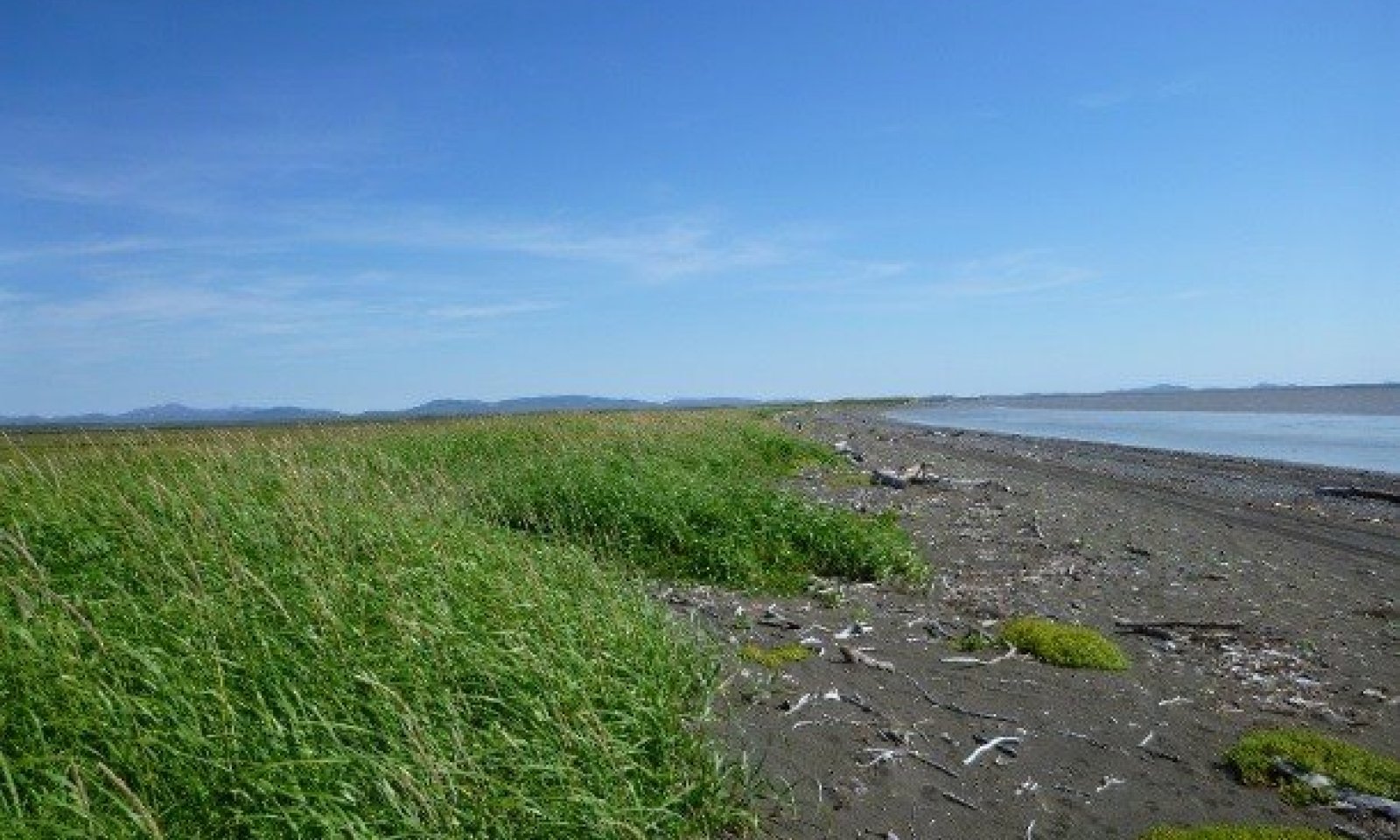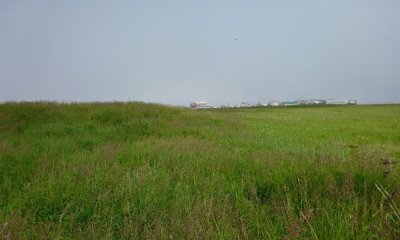
Western Alaska Maritime Graminoid Gravelly Plains, Berms
Scenario model
Current ecosystem state
Select a state
Management practices/drivers
Select a transition or restoration pathway
-
Transition T1A
Berm construction
More details -
No transition or restoration pathway between the selected states has been described
Target ecosystem state
Select a state
State 1
Reference State



Description
The reference state supports one community phase that is distinguished by the developed structure and dominance of the vegetation and the ecological function and stability of the community (fig. 4). The reference plant community is grassland consisting of graminoids and forbs.
This report provides baseline vegetation inventory data. Future data collection is needed to provide further information about existing plant communities. Common and scientific names are from the USDA PLANTS database. All community phases are characterized by the Alaska Vegetation Classification System (Viereck et al., 1992).
Submodel
State 2
Berm Reconstruction



Description
This alternate state results from anthropogenic construction of coastal berms. Naturally shifting berms can create pathways for flooding during coastal storms. To prevent this, bulldozers have been used to reconstruct damaged berms and shore up existing berms (figs. 1 and 8). A new plant community consisting dominantly of bluejoint and coastal forbs typically colonizes these berms. This community commonly is on the gentle slopes of the leeward side of constructed berms. The steeper, exposed, coastal-facing side supports salt-resistant graminoids and forbs such as those in the reference state.
No browsing is associated with this alternate state.
Submodel
Mechanism
This transition is a result of the anthropogenic movement or buildup of berms. The plant community on the leeward side of the berms shifts from salt-resistant coastal vegetation to fast-growing, less salt-tolerant graminoids and forbs.
Model keys
Briefcase
Add ecological sites and Major Land Resource Areas to your briefcase by clicking on the briefcase (![]() ) icon wherever it occurs. Drag and drop items to reorder. Cookies are used to store briefcase items between browsing sessions. Because of this, the number of items that can be added to your briefcase is limited, and briefcase items added on one device and browser cannot be accessed from another device or browser. Users who do not wish to place cookies on their devices should not use the briefcase tool. Briefcase cookies serve no other purpose than described here and are deleted whenever browsing history is cleared.
) icon wherever it occurs. Drag and drop items to reorder. Cookies are used to store briefcase items between browsing sessions. Because of this, the number of items that can be added to your briefcase is limited, and briefcase items added on one device and browser cannot be accessed from another device or browser. Users who do not wish to place cookies on their devices should not use the briefcase tool. Briefcase cookies serve no other purpose than described here and are deleted whenever browsing history is cleared.
Ecological sites
Major Land Resource Areas
The Ecosystem Dynamics Interpretive Tool is an information system framework developed by the USDA-ARS Jornada Experimental Range, USDA Natural Resources Conservation Service, and New Mexico State University.

